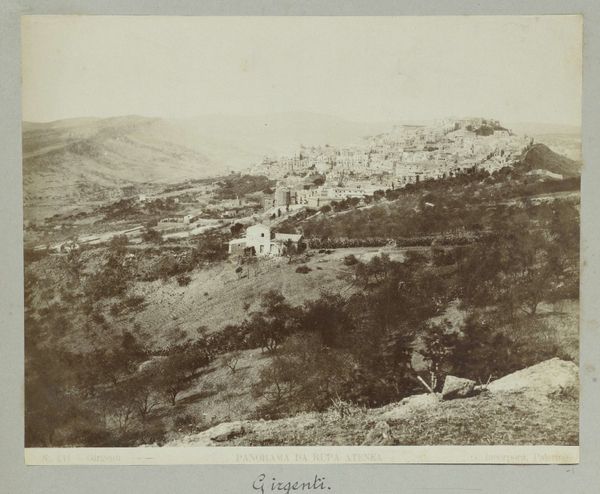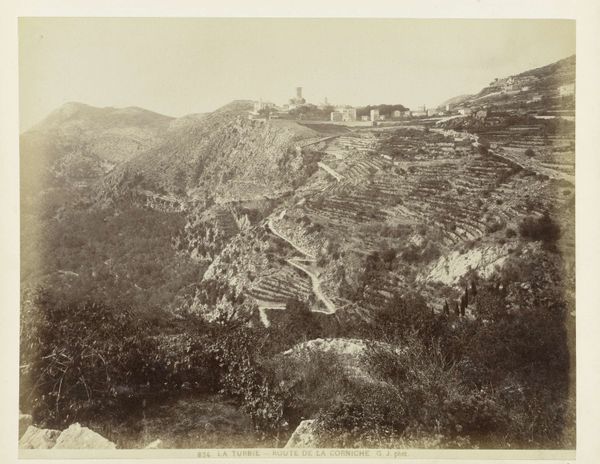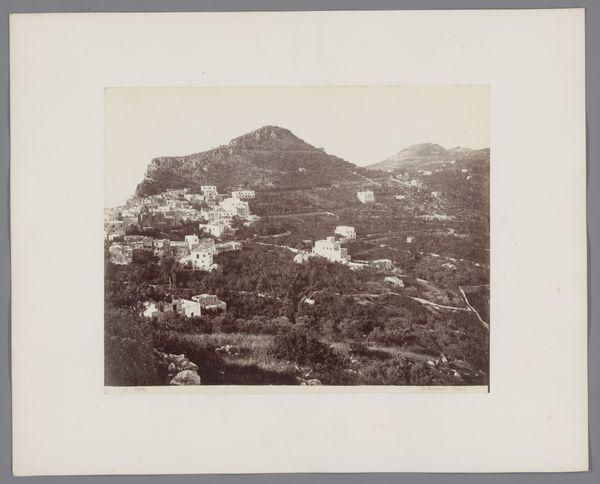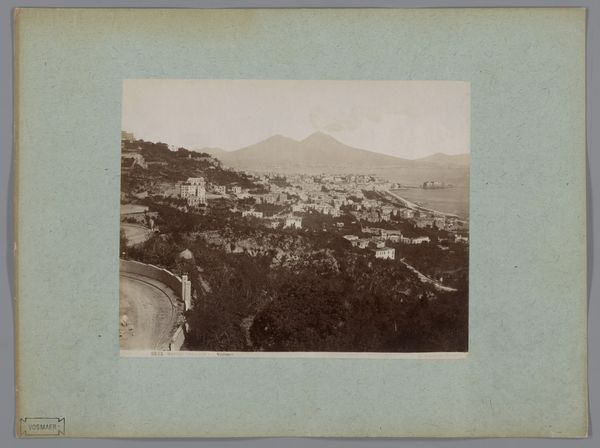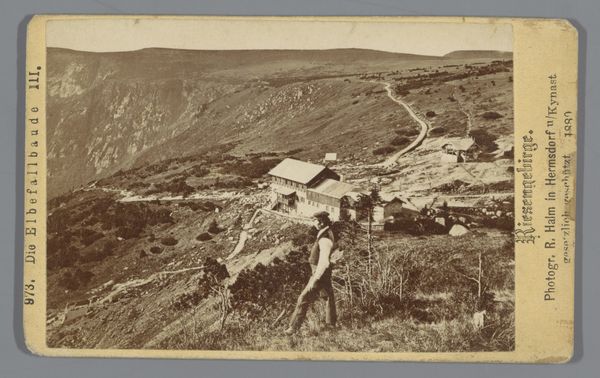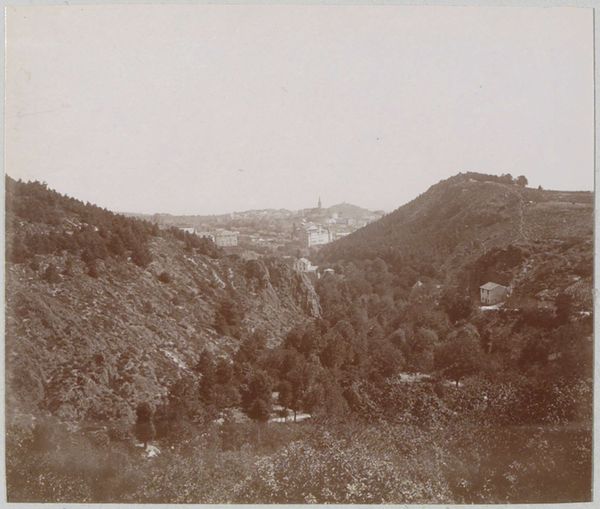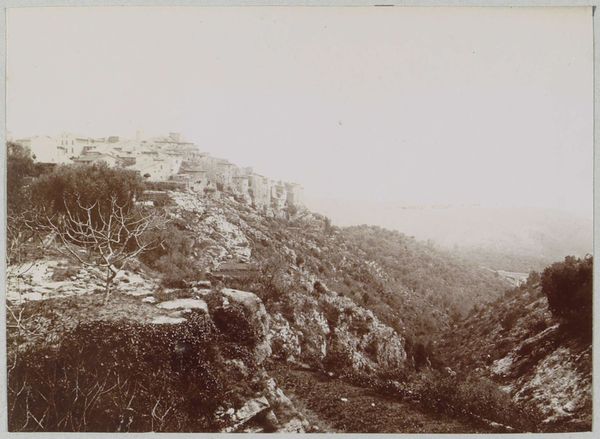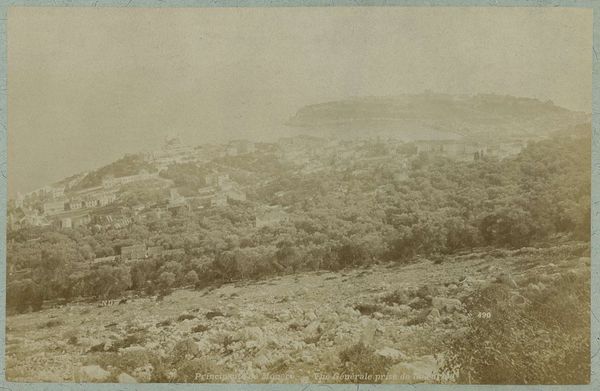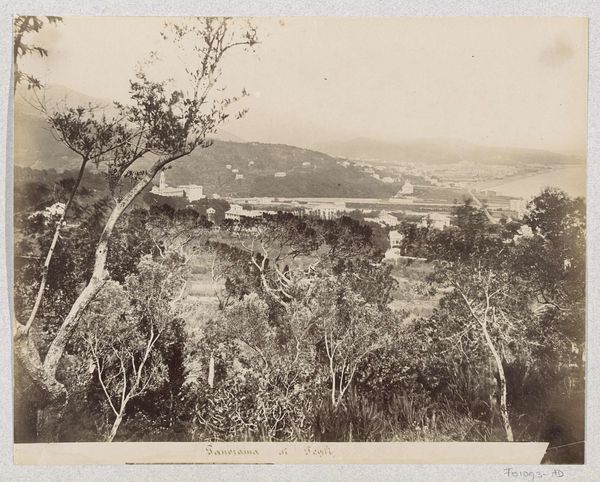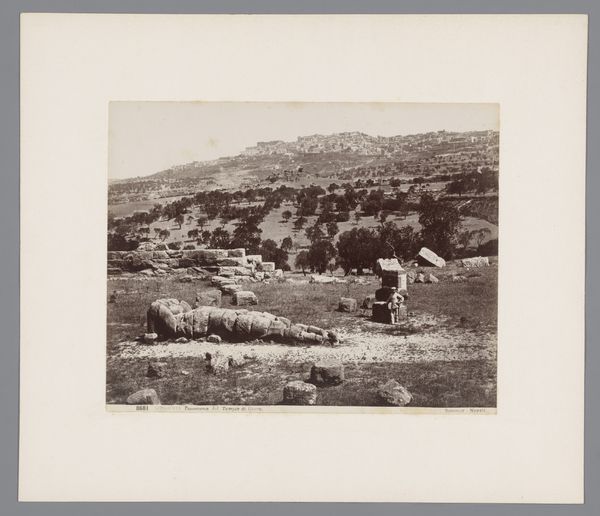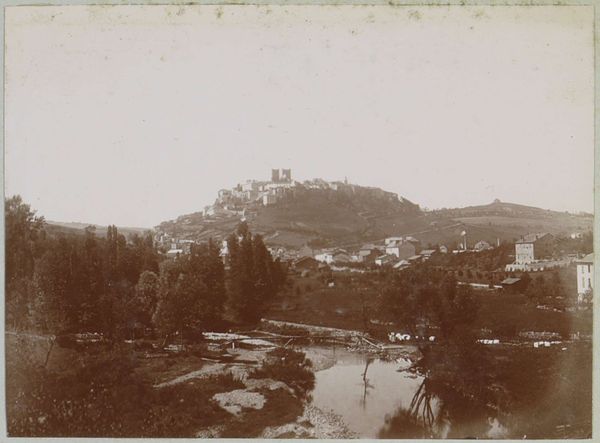
photography
#
pictorialism
#
landscape
#
photography
#
cityscape
#
mixed media
Dimensions: height 258 mm, width 360 mm
Copyright: Rijks Museum: Open Domain
Editor: Here we have "Gezicht op Hyères," a photograph by Étienne Neurdein from 1896. The sepia tone gives it such an antique feel. It's fascinating how this image captures the cityscape nestled on a hillside. How would you interpret this photograph from a historical point of view? Curator: Well, consider that Neurdein was active during a time of significant change in photography. His work participates in what we call pictorialism, meaning that photos were more often seen as art, but photography was simultaneously becoming a powerful tool for documenting and shaping perceptions of places. The composition here, the way he’s framed Hyères, suggests more than just documentation. What statement might he be making about it, the artist, the people in it, or the future? Editor: So, you're saying that he's not just taking a snapshot; he is actively building a picture of what Hyères represents? The placement of the vegetation gives a sort of natural frame… Curator: Exactly. Ask yourself, what’s included, and what's not? Consider the political implications – who had the power to represent this landscape, and how might their choices reflect or reinforce existing social structures? Who paid the artist, and who wanted this picture of Hyères to spread around? Editor: It sounds like a lot of subtle decision-making goes into even what might seem like a straightforward landscape photograph. It goes deeper than just ‘taking’ an image. Curator: Precisely. This photograph isn't just a window onto Hyères; it's a mirror reflecting the values and intentions of its creator and the society of that time. We see in his decision-making an engagement in a certain cultural project of place making, of establishing a sense of importance or perhaps projecting other needs or cultural ideas to those seeing the photograph. Editor: I never thought about photography being so active in shaping ideas about a place, not just recording it! Thanks! Curator: Absolutely! It's those subtle cues that help us understand how art functions within broader historical and social contexts.
Comments
No comments
Be the first to comment and join the conversation on the ultimate creative platform.
